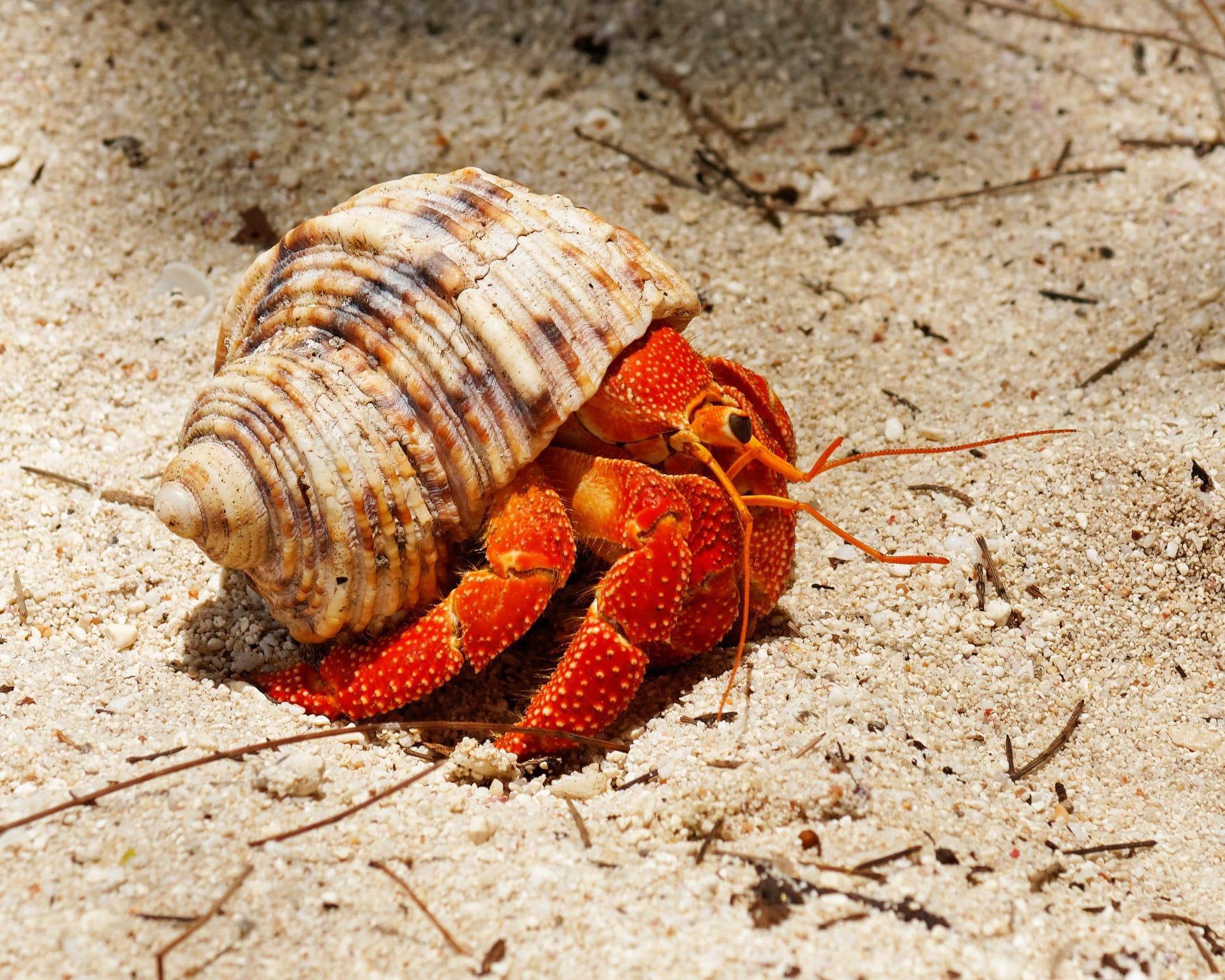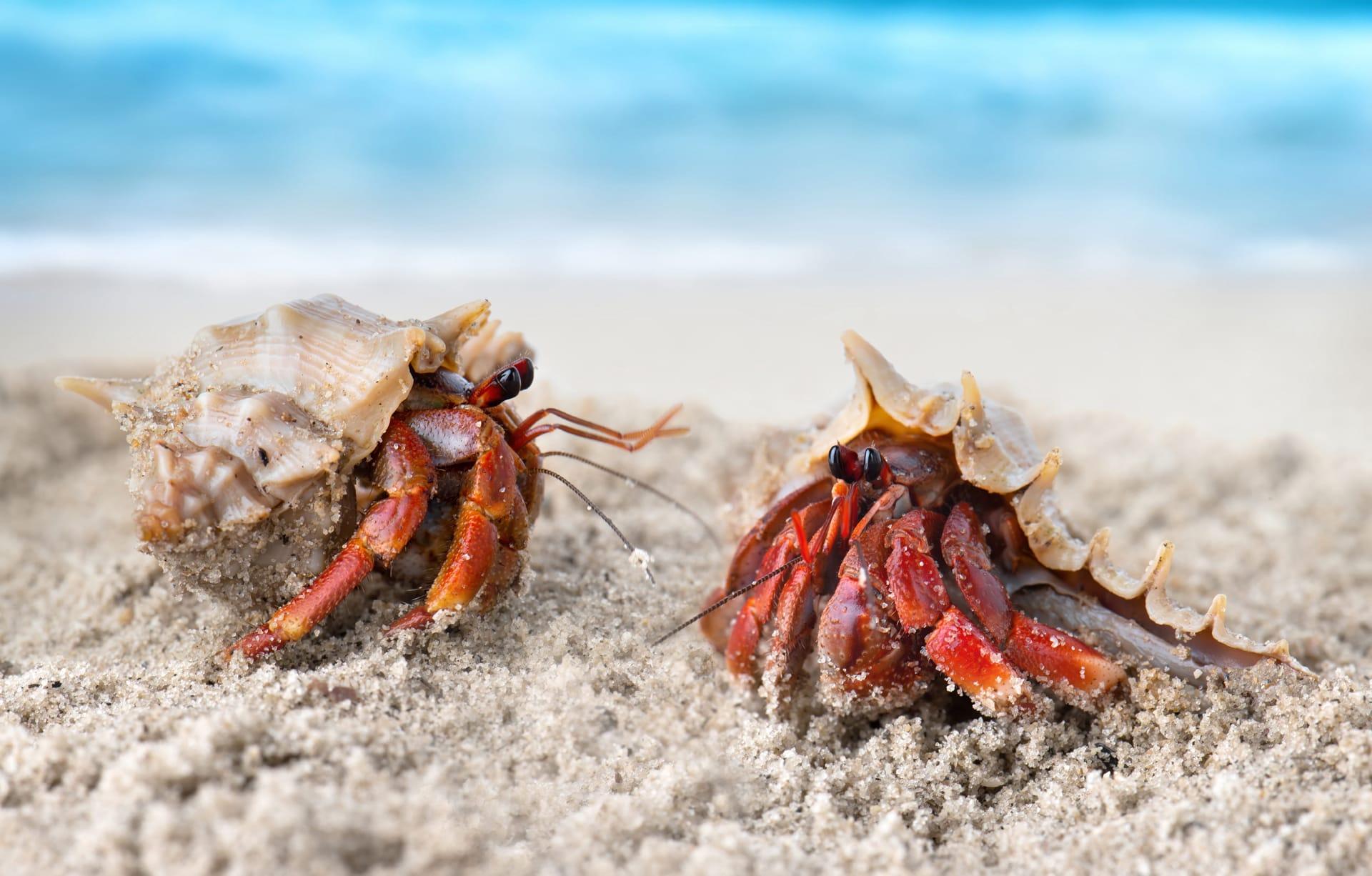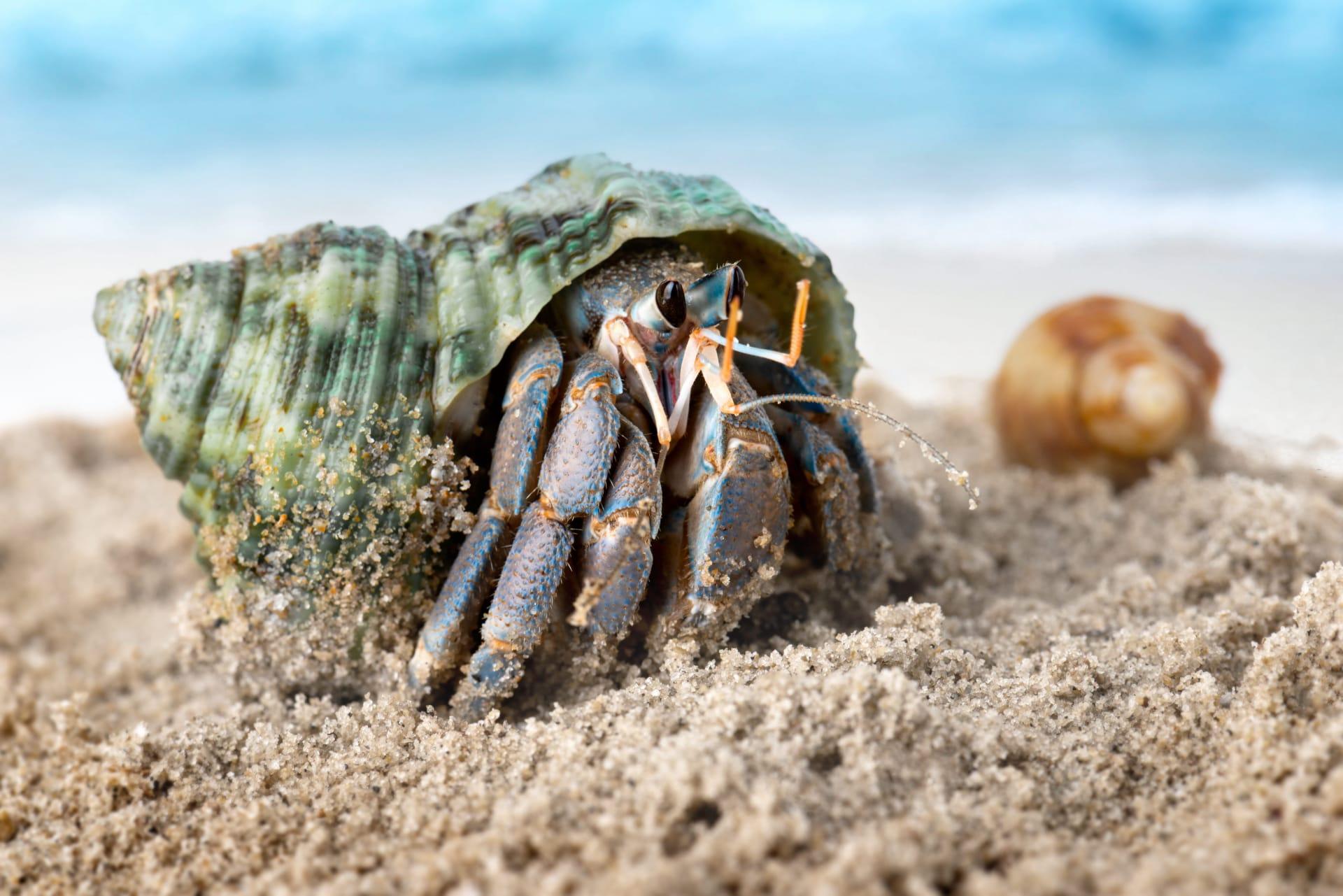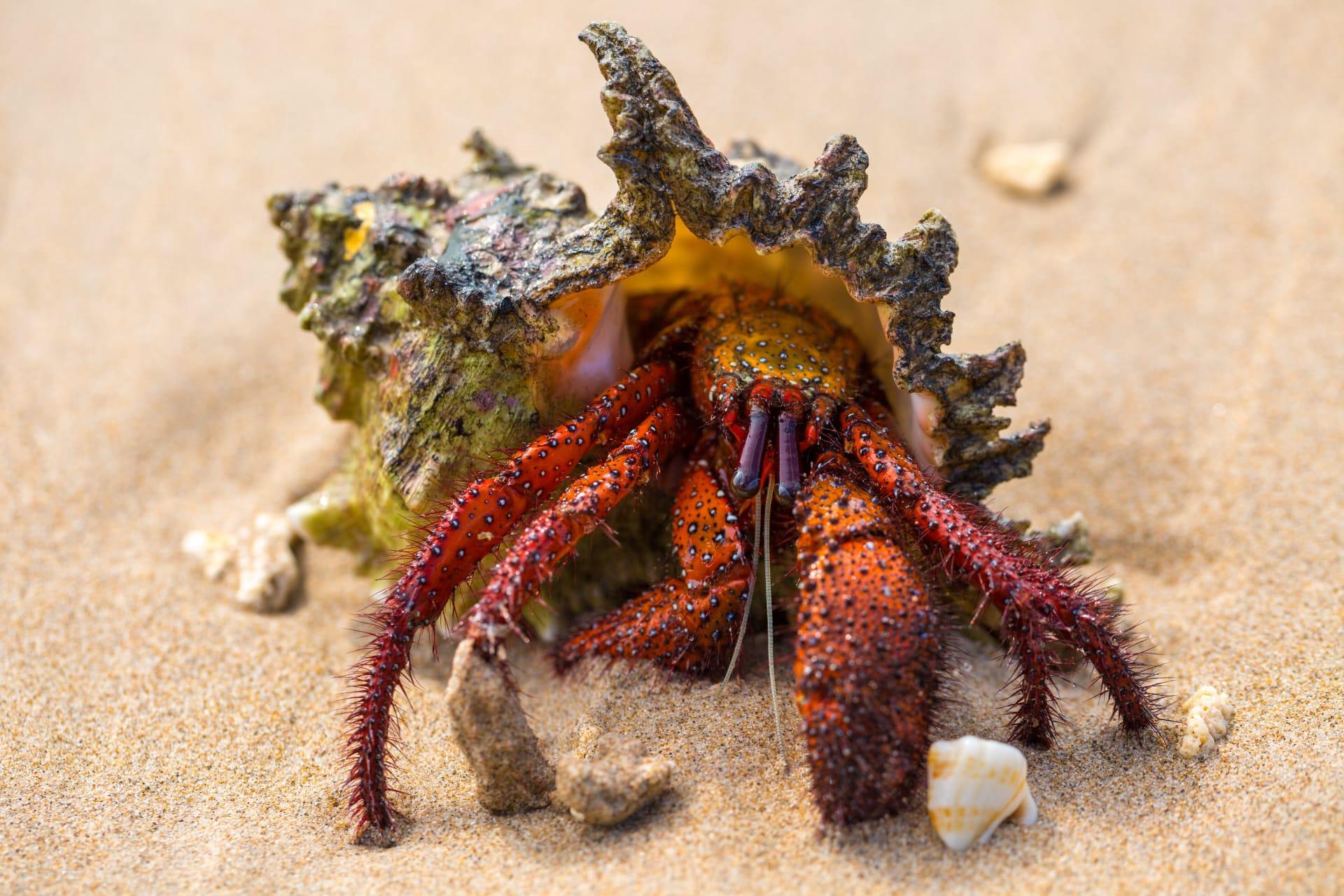Hermit Crab
- Home /
- Mini Encyclopedia /
- Animal /
- Hermit Crab
1
Hermit crabs, known for their habit of living in borrowed shells, belong to the superfamily Paguroidea. This group is diverse, with over 800 species categorized into several families, the most common of which are Paguridae and Coenobitidae. Paguridae hermit crabs are mainly marine, while Coenobitidae includes the terrestrial hermit crabs often found in pet stores. These species vary widely in size, from tiny ones barely a few millimeters long to the coconut crab, which can reach up to a meter in leg span and is considered the largest terrestrial invertebrate.
Hermit crabs are found in oceans all around the world, from the deep sea to shallow reefs, and even on land in tropical regions. Marine species tend to inhabit a range of depths, from intertidal zones to depths of over 1500 meters, adapting to various niches and shell types available in these habitats. Terrestrial hermit crabs, like the Coenobita genus, are primarily found in coastal areas, requiring access to the sea for breeding. Their distribution is global, spanning from the tropics to colder regions, with each species adapting to local conditions and available habitats.

2
Question: Do hermit crabs kill snails to acquire their shells?
Answer: Contrary to a common misconception, hermit crabs usually do not kill snails for their shells. Instead, they scavenge for vacant shells or exchange shells with other hermit crabs. This behavior is crucial for their survival as they grow, necessitating a series of shell changes throughout their life. In cases where suitable shells are scarce, competition can become fierce, but hermit crabs typically rely on finding shells left behind by deceased snails or those shed by other crabs during exchanges.

3
Hermit crabs' primary survival strategy involves using empty seashells or other hollow objects as mobile homes to protect their delicate abdomens, which are not covered by an exoskeleton. This unique adaptation allows them to shield themselves from predators and environmental hazards. As hermit crabs grow, they must find larger shells and often engage in complex social interactions, including shell exchanges and even forming queues for desirable shells.
Another key survival tactic is their ability to regenerate lost limbs, which serves as a defense mechanism. When threatened, hermit crabs can autotomize (voluntarily detach) limbs to escape predators, with the lost limb regenerating over time. This ability not only aids in their escape from immediate danger but also ensures their long-term survival by allowing them to continue foraging and performing essential tasks despite injuries.

4
In their ecosystems, hermit crabs play significant roles as both scavengers and prey. By consuming detritus and decomposing organic material, they contribute to nutrient cycling and the overall health of their habitats. Their activities help break down and recycle energy and matter, making them vital in maintaining the ecological balance.
Hermit crabs also impact the availability of shells, affecting other shell-requiring organisms. Their interactions with shells create a dynamic aspect of the ecosystem, influencing the behavior and evolution of other species. Additionally, as prey for various animals, including fish, birds, and octopuses, they are integral to the food web, supporting the biodiversity and stability of their communities.

5
Film: "Crabs in a Barrel" is a documentary produced in the United States in 2018, exploring the fascinating world of hermit crabs and their unique behaviors, particularly focusing on their social interactions and shell exchange rituals. It provides an in-depth look at the survival strategies of these intriguing creatures.
Book: "The Secret Life of Crustaceans" by American marine biologist Linda S. Johnston, published in 2020, offers a comprehensive overview of various crustaceans, with a detailed chapter dedicated to hermit crabs. It delves into their biology, ecology, and the remarkable adaptability that defines their existence.
Book: "Shells and Shores: Hermit Crabs Up Close" by British naturalist Charles Thompson, released in 2015, focuses exclusively on hermit crabs, from their evolutionary history to their modern-day distribution and behavior. The book is renowned for its vivid photography and engaging narrative that brings the world of hermit crabs to life for readers.